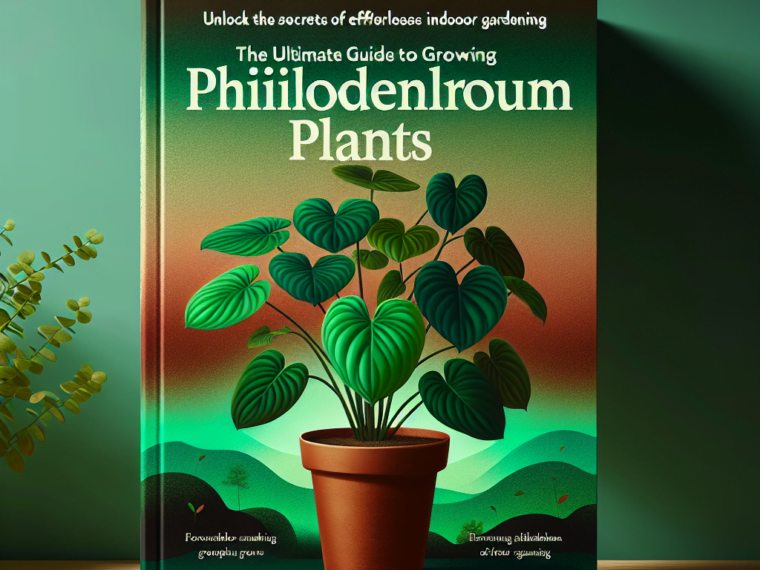Key points
• Choose the right location: Philodendron plants thrive in bright, indirect light. Place them near a window with sheer curtains or in a well-lit room but away from direct sunlight.
• Provide the ideal growing conditions: Keep the soil consistently moist but not waterlogged. Use a well-draining potting mix and water when the top inch of soil feels dry. Maintain a warm, humid environment for optimal growth.
• Support healthy growth: Regularly fertilize the plant during the growing season to promote lush foliage. Prune the plant to encourage bushier growth and remove any yellowing or damaged leaves.
Philodendrons are a diverse group of foliage plants that have gained popularity as houseplants due to their stunning appearance and ease of care. This comprehensive guide will provide valuable insights into the world of philodendron plants, including their various types, growing conditions, maintenance, and troubleshooting common issues.
Overview of the book
This article serves as a comprehensive guide to growing and caring for philodendron plants.
It covers all aspects of philodendron care, from understanding different varieties to addressing common pests and diseases.
Importance of growing philodendron plants
Growing philodendrons not only adds a touch of natural beauty to homes and offices but also contributes to creating a healthier living environment. Philodendrons are known for their air-purifying properties, making them an ideal choice for indoor spaces.
Understanding Philodendron Plants
Description of philodendron plants
Philodendrons belong to the genus Philodendron, which includes hundreds of species. These plants are known for their lush, tropical foliage and are categorized as climbing, non-climbing, or hanging basket plants.
Different varieties of philodendron plants
Philodendrons come in various types, including climbing types, vining varieties, and non-climbing species.
Some popular varieties include Philodendron bipinnatifidum, Philodendron Tetrasperma Ginny, Philodendron Micans, Philodendron Brasil, and Philodendron Hope.
Growing Conditions for Philodendron Plants
Light requirements for philodendron plants
Philodendrons thrive in bright, indirect light but can tolerate lower light conditions. Avoid exposing them to direct sunlight, as it can scorch their leaves.
Temperature and humidity needs
Philodendrons prefer warm, humid environments and are sensitive to cold temperatures. Maintaining a consistent temperature and humidity level is crucial for their well-being.
Soil and potting requirements
Well-draining soil, such as Miracle-Gro® Indoor Potting Mix, is ideal for philodendrons.
Planting them in a ceramic pot with drainage holes promotes healthy root development.
Watering and Feeding Philodendron Plants
Proper watering techniques
Water philodendrons when the top inch of the soil is dry, and ensure that excess water can drain from the pot. Overwatering can lead to root rot, while underwatering can cause wilting and yellowing leaves.
Fertilizing philodendron plants
Feed philodendrons with a balanced houseplant fertilizer according to the product label instructions. Fertilize them during the growing season to support healthy growth.
Propagating Philodendron Plants
Methods for propagating philodendron plants
Philodendrons can be propagated through stem cuttings or by division.
Both methods are effective for creating new plants from existing specimens.
Tips for successful propagation
When propagating philodendrons, ensure that the cuttings or divisions have at least one leaf node and are placed in a suitable rooting medium to encourage root development.
Pruning and Maintenance of Philodendron Plants
Pruning techniques for philodendron plants
Regular pruning helps maintain the desired shape and size of philodendron plants.
Use clean pruning shears to trim any overgrown or damaged stems and leaves.
General maintenance tips
Keep philodendrons free from dust, inspect them for pests regularly, and provide adequate support for climbing varieties to promote healthy growth.
Common Pests and Diseases of Philodendron Plants
Identification of common pests
Philodendrons are susceptible to pests such as aphids, mealybugs, scale, and spider mites.
Regularly inspect the plants for signs of infestation.
Strategies for preventing and treating diseases
Prevent plant diseases by maintaining proper air circulation and avoiding overwatering. Treat pests with natural remedies or insecticidal soap as needed.
Troubleshooting Common Problems with Philodendron Plants
Addressing common issues such as yellowing leaves or wilting
Yellowing leaves can be a sign of overwatering, while wilting may indicate underwatering. Adjust the watering schedule and environment to address these issues.
Conclusion
Recap of key points for successfully growing philodendron plants
Successfully growing philodendron plants requires attention to their specific care requirements, including light, water, and feeding.
By following the guidelines provided in this article, readers can ensure the thriving growth of their philodendron plants.
Encouragement for readers to enjoy their thriving philodendron plants
Embrace the joy of nurturing philodendron plants and appreciate the beauty they bring to indoor spaces. With proper care and attention, these lovely plants will flourish and enhance any home or office environment.



